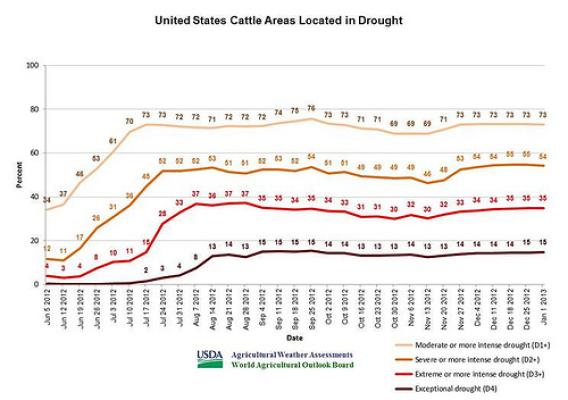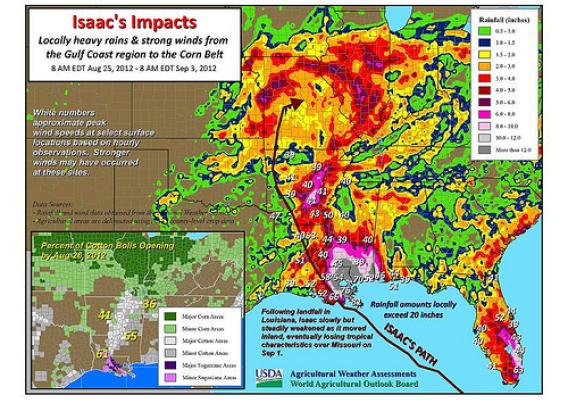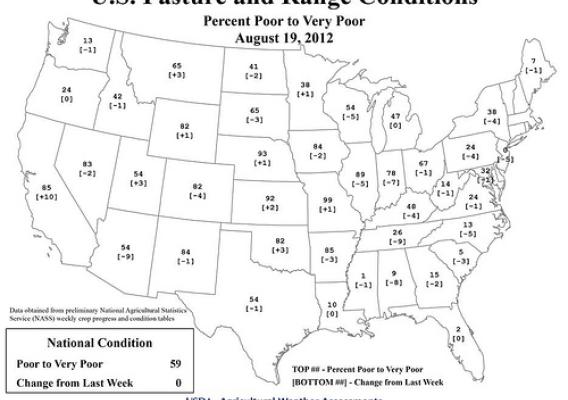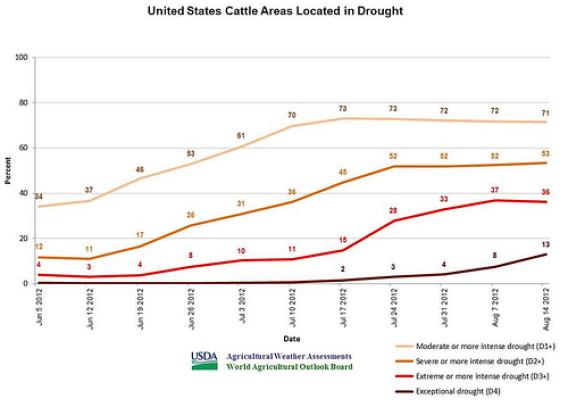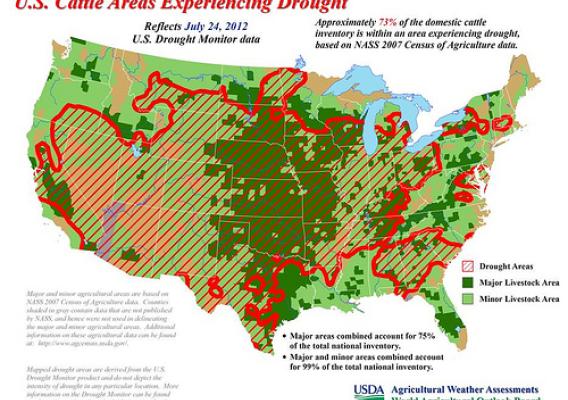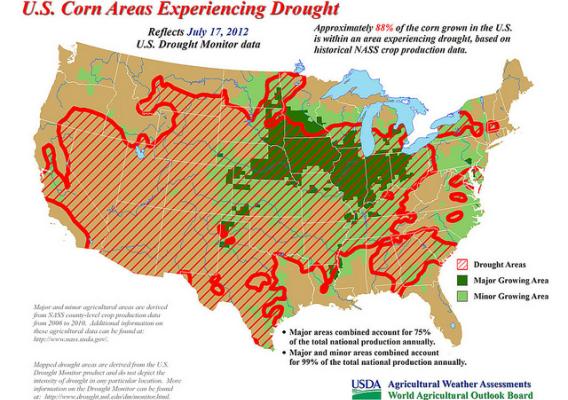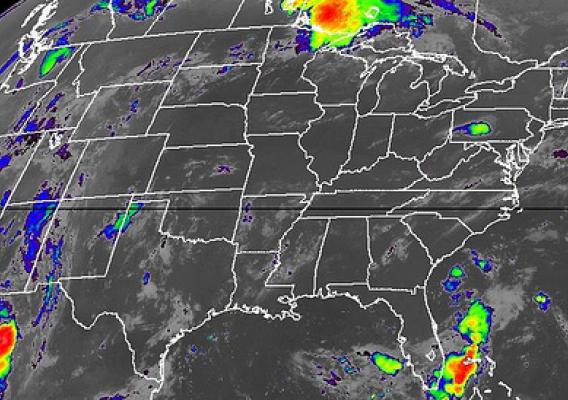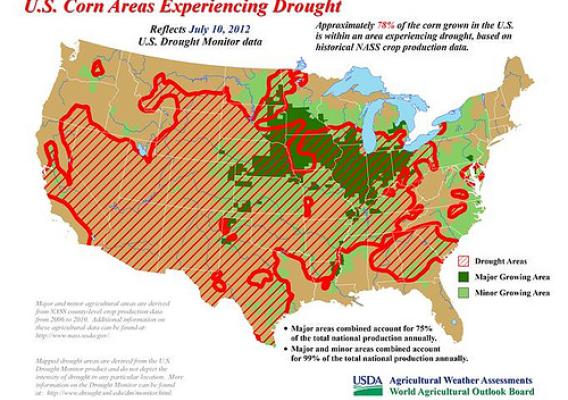Visit www.usda.gov/drought for the latest information regarding USDA’s Drought Disaster response and assistance.
The latest U.S. Drought Monitor, dated August 14, indicates that some drought-affected areas of the United States have begun to turn the corner with respect to the historic drought of 2012. During the seven-day period ending August 14, conterminous U.S. drought coverage fell to 61.8%, down from a July 24 peak of 63.9%. Continental U.S. coverage of extreme to exceptional drought (D3 to D4), the two worst drought categories, dipped to 23.7%, less than one-half of a percentage point below last week’s peak. However, U.S. exceptional drought (D4) coverage actually rose in the last week, from 4.2 to 6.3%, on the strength of worsening conditions in Colorado, Kansas, Missouri, Nebraska, and Oklahoma. In fact, Missouri leads the nation—according to USDA’s National Agricultural Statistics Service—in very poor to poor ratings for pastures (98% VP to P), corn (84%), and soybeans (75%).

